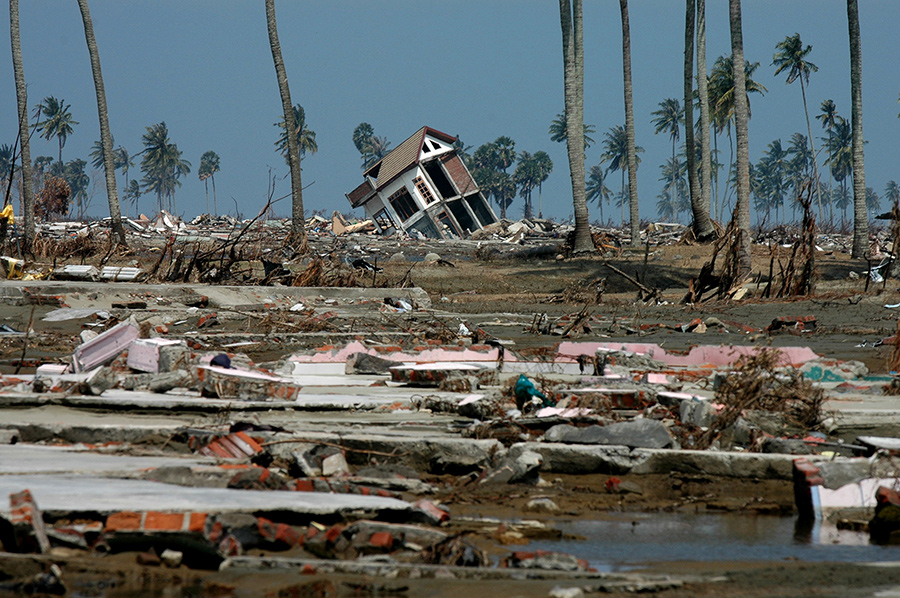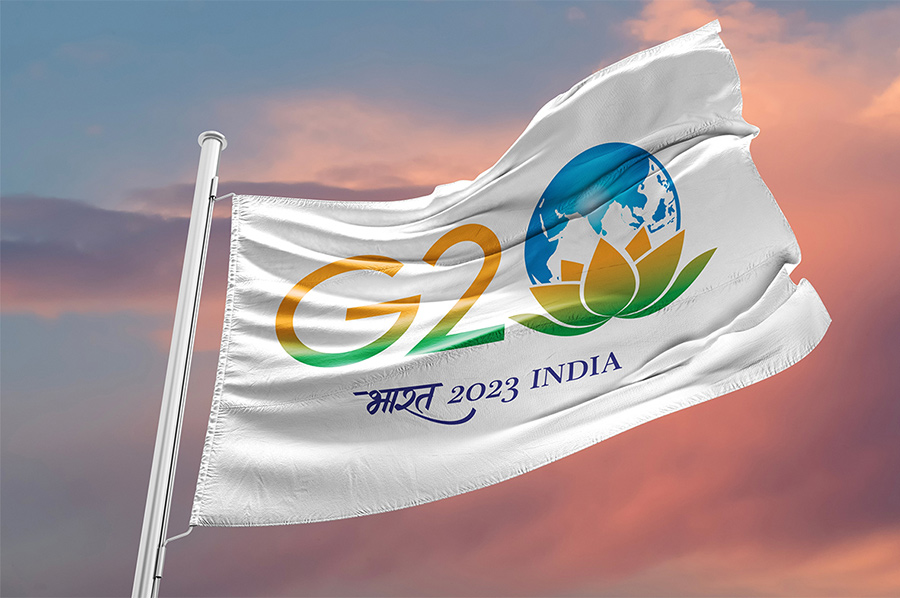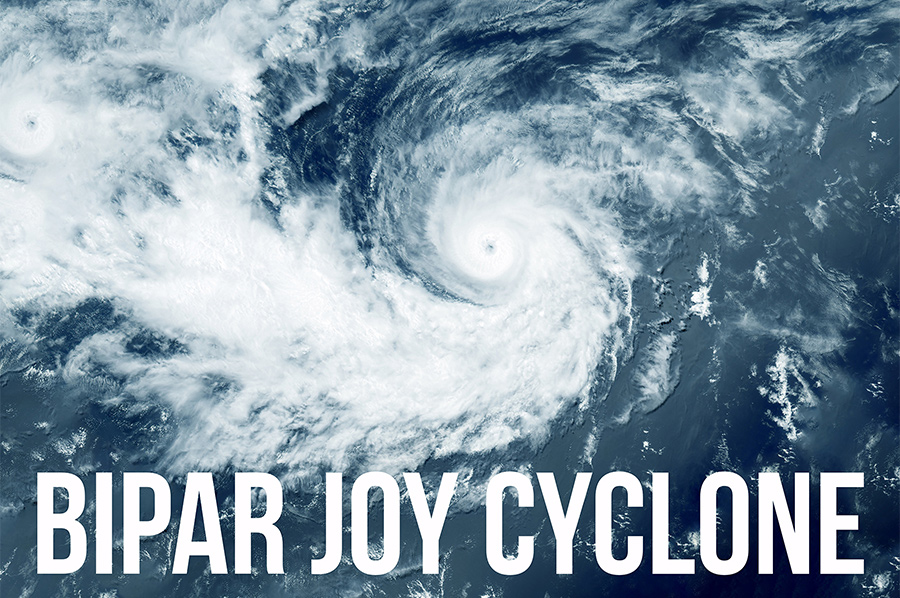31 January 2024
Key-Note
Behind Community Cheer, Lies Vigilance - Insights from India's Disaster Management Maestro
Rajendra Ratnoo, IAS, Executive Director, National Institute of Disaster Management,
unveils strategies to promote safety during crowd pullers, harnessing contemporary solutions. A candid
interaction with Yogesh Mudras, Managing Director, Informa Markets in India.
Yogesh Mudras: As a policy-maker of repute, you have served in various capacities pertaining to crisis.
Through
personal experience, which occurrence had been the toughest to experience, manage, and then overcome? What is
the
central learning from them?
Rajendra Ratnoo:My first posting as an IAS officer was to work as Sub-Collector and
Sub-Divisional Magistrate at Chidambaram division (coastal region) in Cuddalore district of Tamil Nadu in 2003.
During this time, I faced the toughest experience of the 2004 Indian Ocean Tsunami which badly affected coastal
areas of Tamil Nadu among many other areas. The most difficult part while managing the situation as soon as the
information came, was to identify the injured and dead, so that help could be reached on time. I positioned
myself
near PHC hospital where the victims were rushed. The decisions were taken to identify teams for identification
of
injured and dead, so that the dead bodies can be transferred to another safe location, not close to habitation,
to
reduce the carrying capacity of the hospitals and avoid spread of diseases.
 Many parallel actions and decisions were taken where community was integral in supporting the Government
actions such as search and rescue, bringing injured to hospitals even before special forces arrived,
providing
food,
shelter and vehicle for transportation etc.
Many parallel actions and decisions were taken where community was integral in supporting the Government
actions such as search and rescue, bringing injured to hospitals even before special forces arrived,
providing
food,
shelter and vehicle for transportation etc.
The major learning in this process was the communal harmony seen during the Tsunami, where a small
habitation of
fishermen came forward to not only provide the food from their marriage gathering but also volunteered in
mobilizing
the food.
We started the concept of ‘Community Kitchen’ where rations were provided by the Government,
while
utensils and other logistics were given by the community. This brought forward the new model of management
where
Government and volunteers from the community worked together to face the aftermath of Tsunami.
YM: Large crowds gathering for celebrations or other purposes is common in India, and at these moments, the
public
may not be inclined to discuss 'disaster.' How challenging is it then to raise awareness about disaster
preparedness
and encourage them to prioritize safety over complacency?
RR: During Indian festivals, large crowds tend to attend religious events, visit markets
and
shopping malls. These gatherings, while potentially risky, offer opportunities for disaster preparedness
promotions
as well. Market and malls can arrange promotional events with free information, IEC material and awards that
support
disaster education. Digital campaigns can be launched with the use of internet and social media can also
effectively
educate the public. Further, engaging religious groups, Self Help Groups, Apda Mitra youth volunteers, local
political parties, and charitable organisations such as the Red Cross, for community awareness and
participation,
can help spread safety information during festivals.
 YM: Can you tell us about your role and responsibilities as the Executive Director of the National
Institute
of
Disaster Management (NIDM)? What are some of the notable achievements or initiatives undertaken by NIDM
during
your
tenure as Executive Director?
RR: The position as an Executive Director of National Institute of Disaster Management
(NIDM) involves working as the administrative head of the institute. I coordinate with academic and
administration
divisions to streamline actions to achieve the long-term vision of the institute and promote team
building.
In the
recent past, NIDM has successfully organised and participated in major platforms of disaster management
such
as the
3rd Session of National Platform for Disaster Risk Reduction (NPDRR), and G20 Disaster Risk Reduction
Working Group
Meetings, with the aim of building the capacity of the nation. NIDM continuously works towards
mainstreaming
DRR
with all ministries and departments and facilitate the integration of disaster risk reduction training
into
various
government departments and higher education.
YM: Given your experience in disaster management, can you highlight some of the key challenges that
India
faces
in
this area and the policies/strategies needed to address them? Conversely, what are some of the most
vital
emerging
trends and technologies that can enhance disaster management and response in India?
YM: Can you tell us about your role and responsibilities as the Executive Director of the National
Institute
of
Disaster Management (NIDM)? What are some of the notable achievements or initiatives undertaken by NIDM
during
your
tenure as Executive Director?
RR: The position as an Executive Director of National Institute of Disaster Management
(NIDM) involves working as the administrative head of the institute. I coordinate with academic and
administration
divisions to streamline actions to achieve the long-term vision of the institute and promote team
building.
In the
recent past, NIDM has successfully organised and participated in major platforms of disaster management
such
as the
3rd Session of National Platform for Disaster Risk Reduction (NPDRR), and G20 Disaster Risk Reduction
Working Group
Meetings, with the aim of building the capacity of the nation. NIDM continuously works towards
mainstreaming
DRR
with all ministries and departments and facilitate the integration of disaster risk reduction training
into
various
government departments and higher education.
YM: Given your experience in disaster management, can you highlight some of the key challenges that
India
faces
in
this area and the policies/strategies needed to address them? Conversely, what are some of the most
vital
emerging
trends and technologies that can enhance disaster management and response in India?
 RR: India has a diverse geographical ecosystem where the impact of hazards and climate
change is varied which brings new challenges among many existing vulnerabilities to disasters. Majorly,
integrating
structural resilience, particularly in housing and infrastructure, is hampered by limited awareness and
lack
of
strict policies. There is a need to strike a balance between economic growth and sustainable
development.
For
example, the recent incidents of Sikkim GLOF and Joshimath subsidence highlight the sensitivity of
Himalayan
environment to climate change and rapid development on exposed areas.
RR: India has a diverse geographical ecosystem where the impact of hazards and climate
change is varied which brings new challenges among many existing vulnerabilities to disasters. Majorly,
integrating
structural resilience, particularly in housing and infrastructure, is hampered by limited awareness and
lack
of
strict policies. There is a need to strike a balance between economic growth and sustainable
development.
For
example, the recent incidents of Sikkim GLOF and Joshimath subsidence highlight the sensitivity of
Himalayan
environment to climate change and rapid development on exposed areas.
The Government is seriously addressing the emerging challenges both natural and manmade through policies
and
tools.
NIDM is also working to build capacity of the community till last mile connectivity with help of state
Government
and other organizations. However, due to large population with varied socio-cultural and economic
factors
disseminating the messages often becomes challenging. Improving disaster management in disaster-prone
India
is
essential, given its susceptibility to various natural and human-made disasters. Emerging technologies
offer
invaluable tools for enhancing disaster management and response, including AI and machine learning for
predictive
analysis, geospatial technology for mapping and real-time tracking, UAVs for assessment and rescue
operations.
Other
technologies like IoT for environmental data, big data analytics for trend identification, blockchain
for
transparent relief distribution, crowdsourcing for real-time information gathering, satellite
communication
for
remote connectivity, mobile apps for alerts and reporting, and robotics for safe search and rescue are
also
beneficial.
These innovations have revolutionized disaster management, but it's crucial to ensure their
accessibility to
all,
including vulnerable communities.
YM: With experience in both state and central government roles, how do you perceive the coordination
and
synergy
between state and central agencies in disaster management as well as with govt. agencies.
RR: Effective disaster management necessitates seamless coordination among state and
central agencies and government bodies, especially during major disasters. Collaboration across various
government
levels and organisations is vital for disaster risk reduction (DRR), enhancing response, reducing risks,
and
safeguarding lives and property. One such example of synergy seen between centre, state and other
government
agencies is the exemplary preparedness work done by Government along with community during Biparjoy
Cyclone
of
June
last year, which resulted in zero causality. This involves establishing clear authority, standardizing
procedures,
improving communication and information sharing, conducting joint training, and fostering a culture of
cooperation.
YM: Could you provide insights into international collaborations and partnerships that India has
established
to
learn from global best practices in disaster management? Are they doing something better than us?
RR: As India progresses towards becoming one of the world's top two economies by 2047,
it
recognizes the importance of international partnerships for strengthening disaster management
capabilities.
These
collaborations have historically provided financial aid, technical expertise, and resources for disaster
relief
and
recovery, enhancing India's emergency response. Learning from global best practices is imperative given
the
frequency of natural and man-made disasters and the impact of climate change. India's G-20 presidency
under
the
motto "One Earth, One Future," reflects a broader focus on global development and sustainability. India
actively
participates in global agreements like the Sendai Framework for Disaster Risk Reduction and collaborates
with
organizations such as the UNDRR, ADRC, and SAARC to exchange knowledge and experiences in the
AsiaPacific
region
and
beyond.
 Alongside education and research cooperation, Indian officials, experts, scientists, and students engage
in
international training programs and conferences related to disaster management, facilitating knowledge
exchange.
India has also adopted global best practices in disaster management, including the Incident Command
System
(ICS)
and
technology-driven early warning systems. India is commitment to international sustainability goals
through
initiatives like the International Solar Alliance (ISA), and the Coalition for Disaster Resilient
Infrastructure
(CDRI), emphasizing its dedication to addressing climate challenges, promoting sustainable development,
and
resilient infrastructure. India is leading example of certain technologies like the first ever concept
of
digital
financial inclusion and use of smart phones for digital transactions through UPIs.
Indian Government has also taken the game changing initiative namely Open Network for Digital Commerce
(ONDC), a
consortium of merchants and brands that have established an interconnected digital commerce platform for
small
merchants. These initiatives will benefit in providing sustainable livelihood options to small traders
and
merchants
whose livelihoods are most affected during any major disaster. However, some of the new technologies for
emergency
and disaster management is better evolved in resilient cities like Japan for its excellent earthquake
early
warnings
where India may need to look towards them.
YM: Can you share some of the initiatives and strategies employed to raise awareness about disaster
management
among
various stakeholders, including teachers, students, technical personnel, and others?
Alongside education and research cooperation, Indian officials, experts, scientists, and students engage
in
international training programs and conferences related to disaster management, facilitating knowledge
exchange.
India has also adopted global best practices in disaster management, including the Incident Command
System
(ICS)
and
technology-driven early warning systems. India is commitment to international sustainability goals
through
initiatives like the International Solar Alliance (ISA), and the Coalition for Disaster Resilient
Infrastructure
(CDRI), emphasizing its dedication to addressing climate challenges, promoting sustainable development,
and
resilient infrastructure. India is leading example of certain technologies like the first ever concept
of
digital
financial inclusion and use of smart phones for digital transactions through UPIs.
Indian Government has also taken the game changing initiative namely Open Network for Digital Commerce
(ONDC), a
consortium of merchants and brands that have established an interconnected digital commerce platform for
small
merchants. These initiatives will benefit in providing sustainable livelihood options to small traders
and
merchants
whose livelihoods are most affected during any major disaster. However, some of the new technologies for
emergency
and disaster management is better evolved in resilient cities like Japan for its excellent earthquake
early
warnings
where India may need to look towards them.
YM: Can you share some of the initiatives and strategies employed to raise awareness about disaster
management
among
various stakeholders, including teachers, students, technical personnel, and others?
 RR: NIDM is a key player in disaster preparedness, offering many trainings related
programs in various disaster management fields to master trainers and other stakeholders. Collaborating
with
government agencies, NGOs, and international partners, NIDM strengthens the collective efforts in
building
capacities and mainstreaming disaster preparedness. NIDM also forges MOUs with ministries, departments,
and
universities, while also motivating youths through launching its first Brand Ambassador and Youth Icon
this
year.
NIDM's responsibilities encompass organizing courses, crafting training modules and guidelines, and
organizing
and
supporting international and national events. It has been entrusted to establish the IUINDRR-NIDM
platform
for
the
networking of universities towards disaster risk reduction and managing of IDRN platform which is a
digital
platform
of resource inventories. NIDM also hosts many specialized Projects in collaboration such as NIDM -
UNICEF
Collaboration for building Capacity on Social and Behavioural Change Communication (SBCC) Initiative;
Climate
Adaptive Planning for Resilience and Sustainability Development in Multi-Hazard Environment (CAP-RES) in
collaboration with DST and many other international organizations and ministries. Additionally, NIDM
offers
e-learning courses with the World Bank to promote disaster preparedness education for
all.
YM: NIDM has been actively engaged in integrating climate change with disaster risk reduction (DRR). As
India
faces
increasing climate-related challenges, how do you envision its role in promoting sustainable and
resilient
development in the face of changing climate patterns?
RR: NIDM's Environment and Climate Disaster Risk Management division (ECDRM) spearheads
capacity building, research, and projects for climate-resilient sustainable development in India.
They've
developed
manuals like 'Green Growth and Resource Efficiency for DRR' in 2022, emphasizing the shift to a green
economy,
and
many others like 'Climate Change and Extreme Events Risk Reduction,'; 'Climate and Disaster Resilient
Agriculture
Management,' and 'Health Adaptation and Resilience to Climate Risks,' illustrating NIDM's dedication to
integrate
climate and disaster management. NIDM also provides training to governmental and non-governmental
entities,
guiding
policymakers, civil servants, and other stakeholders on climate-resilient policies and the adoption of
cleaner
technologies for reducing emissions and environmental impact.
RR: NIDM is a key player in disaster preparedness, offering many trainings related
programs in various disaster management fields to master trainers and other stakeholders. Collaborating
with
government agencies, NGOs, and international partners, NIDM strengthens the collective efforts in
building
capacities and mainstreaming disaster preparedness. NIDM also forges MOUs with ministries, departments,
and
universities, while also motivating youths through launching its first Brand Ambassador and Youth Icon
this
year.
NIDM's responsibilities encompass organizing courses, crafting training modules and guidelines, and
organizing
and
supporting international and national events. It has been entrusted to establish the IUINDRR-NIDM
platform
for
the
networking of universities towards disaster risk reduction and managing of IDRN platform which is a
digital
platform
of resource inventories. NIDM also hosts many specialized Projects in collaboration such as NIDM -
UNICEF
Collaboration for building Capacity on Social and Behavioural Change Communication (SBCC) Initiative;
Climate
Adaptive Planning for Resilience and Sustainability Development in Multi-Hazard Environment (CAP-RES) in
collaboration with DST and many other international organizations and ministries. Additionally, NIDM
offers
e-learning courses with the World Bank to promote disaster preparedness education for
all.
YM: NIDM has been actively engaged in integrating climate change with disaster risk reduction (DRR). As
India
faces
increasing climate-related challenges, how do you envision its role in promoting sustainable and
resilient
development in the face of changing climate patterns?
RR: NIDM's Environment and Climate Disaster Risk Management division (ECDRM) spearheads
capacity building, research, and projects for climate-resilient sustainable development in India.
They've
developed
manuals like 'Green Growth and Resource Efficiency for DRR' in 2022, emphasizing the shift to a green
economy,
and
many others like 'Climate Change and Extreme Events Risk Reduction,'; 'Climate and Disaster Resilient
Agriculture
Management,' and 'Health Adaptation and Resilience to Climate Risks,' illustrating NIDM's dedication to
integrate
climate and disaster management. NIDM also provides training to governmental and non-governmental
entities,
guiding
policymakers, civil servants, and other stakeholders on climate-resilient policies and the adoption of
cleaner
technologies for reducing emissions and environmental impact.
For sustainable urban planning and development, NIDM's Resilient Infrastructure division promotes
training
and
capacity building towards disaster-safe and environmentally friendly practices through the adoption of
nature-based
solutions, net-zero buildings, and blue-green infrastructure to enhance community and infrastructure
resilience
in
the face of climate-related hazards, ultimately supporting overall sustainability and development.